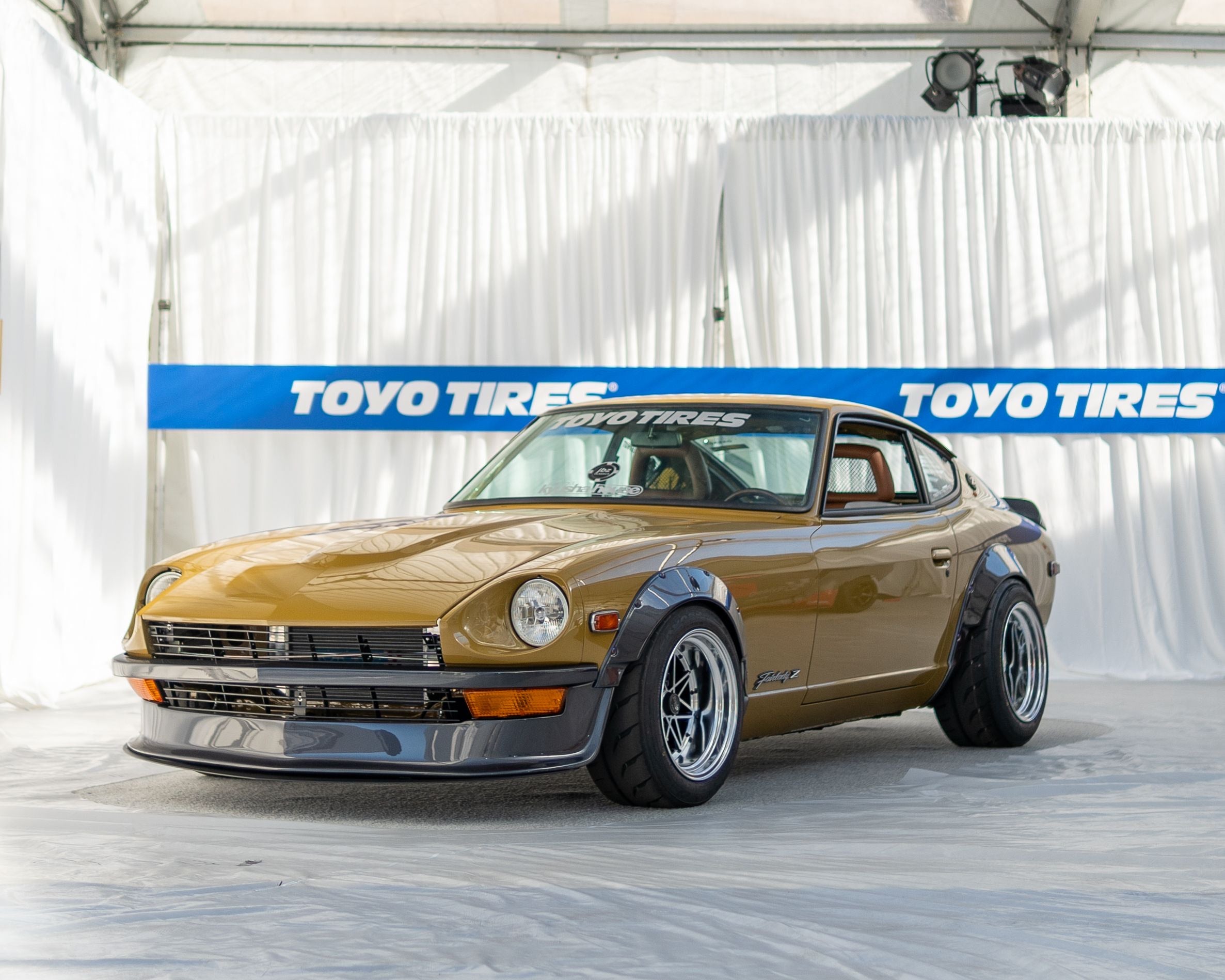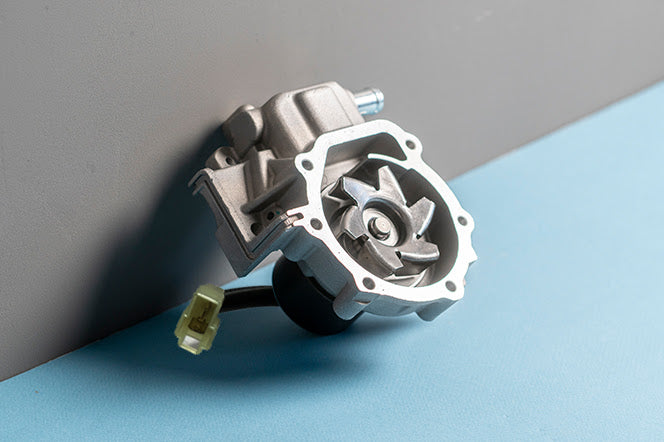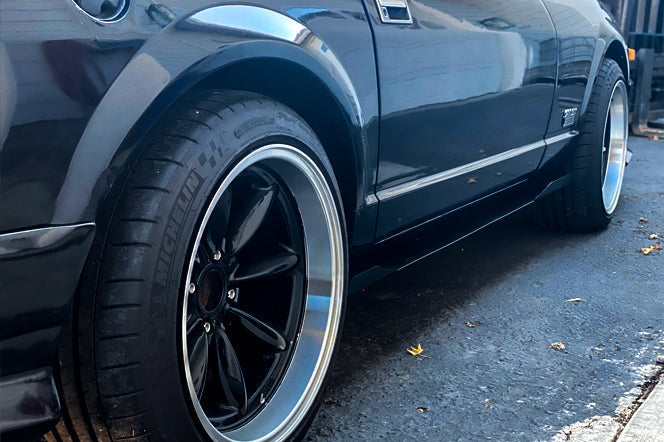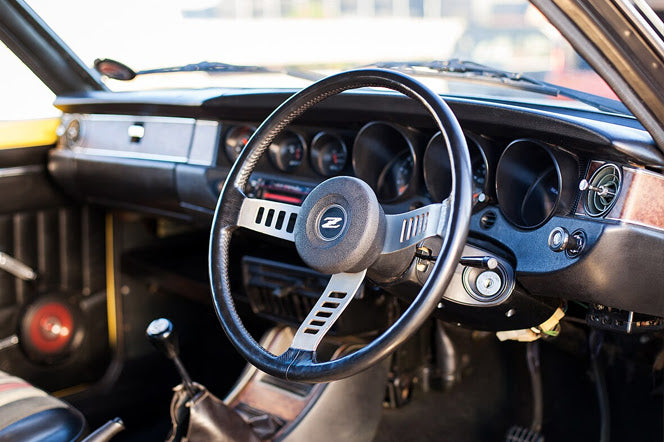Electric water pump upgrades have become one of the most talked-about mods in the S30 world. These setups can give your engine more horsepower and provide much better cooling control than you'll ever get from a mechanical pump. Today's high-performance builds run into heat problems that the original 1970s engineers never had to worry about.
It's really about what you want from your car and how comfortable you are with extra electrical parts. Different drivers have different goals, and some love the latest tech and aren't bothered by the added wiring, while others prefer to keep their setup simple and reliable.
Let's take a quick look at the pros and cons so you can make the right choice!
Table of Contents
Why Your S30 Cooling System Fails
Most S30 owners eventually learn this lesson the hard way - there's something seriously wrong with how these cooling systems work. Your water pump connects directly to your crankshaft and sounds fine until you realize what this actually means. Your pump can move the coolant only as fast as your engine is spinning. At a red light on a very hot summer day, your engine is barely idling along. Your water pump is barely doing anything either.
Modern stop-and-go traffic really messes with these classic car setups. Back in the 1970s, Datsun engineers designed these vehicles with wide-open highways in mind - those nice steady cruising speeds where all the cooling parts work together like they're supposed to. They never anticipated that drivers would wind up spending most of their day inching through endless traffic jams at 5 mph. Add in today's ethanol-heavy pump gas that burns a little bit hotter than the old leaded fuel that these engines were built for, and it turns into the perfect recipe for a dangerously overheated Z car.

Everything gets even worse after driving hard. Pull into a parking space after pushing your Z hard, and the temperature gauge starts climbing toward the danger zone. Your engine is still cooking hot. Your water pump is now turning slowly again and just can't move enough coolant to stay ahead. Anyone who's taken their car to the track knows just what I'm talking about! Most of us find ourselves sitting there with the engine idling for a few minutes just to stop the whole system from boiling over.
High-mileage S30s have their own particular problems, too. After decades of use, the seals and bearings in that mechanical pump start to give up. You might notice coolant dripping from the little drain hole, or you might hear some nasty bearing noise before the whole unit fails. These pumps were never meant to run for 50 or more years, and the replacement parts that are available today are usually made with cheaper materials that don't last nearly as long as the originals.
Get Back Your Lost Horsepower
Belt-driven water pumps on the Datsun S30 are outright power thieves that rob energy from your engine the whole time it's running. Around five horsepower gets lost just at idle to spin that pump. Push the engine toward the redline, and you could give up fifteen horsepower or even more. This happens because your crankshaft has to turn that water-pump pulley through the belt system.
This very quickly turns into a big headache for S30 owners because the naturally aspirated L28 engine only puts out about 170 horsepower in stock form. With numbers that modest, you lose even a few horsepower here and there, and it starts to sting. And if the car came with an L24 or L26 under the hood, there's even less power to work with, so each horsepower matters.
This power drain is even more obvious if you spend any time on the track. Steady lap times and sharp throttle response depend on every bit of available power at the wheels, so even modest gains can make a real difference in performance. An electric water pump gives you that same cooling flow without always stealing power from your crankshaft. That energy can go straight to the wheels, where it actually belongs.

Ten extra horsepower can sound small. It makes a real difference in these engines. A decent set of headers will usually add between eight and twelve horsepower. A mild cam upgrade delivers similar gains. An electric water pump falls in that same range, yet it's much easier to install than either one.
These gains can even help with your fuel mileage on the highway. Your engine just doesn't have to work as hard to hold speed when it no longer has to spin that mechanical pump all the time!
Better Coolant Control with Electric Pumps
Programmable controllers really shine here. You can set the exact temperature targets and flow rates that match what your engine actually needs. Just program it to keep your L28 right at 185 degrees, and you're done. Automatic adjustments keep the pump speed matched to that temperature target, whether you're cruising down the highway or stuck in stop-and-go traffic.

Heat soak tends to be one of the most frustrating problems you'll run into with turbocharged L28ETs, and any high-compression builds. An electric coolant pump can actually keep the coolant circulating even after you've shut the engine down for the day. This continuously pulls that excess heat away from those especially problematic hot areas and prevents the nasty temperature spike that almost always happens once the mechanical parts stop moving. Both your turbo and your head gasket are going to get much better protection, and they'll last considerably longer than they would otherwise.
Between autocross runs, your car needs to cool down fast, or your next lap is definitely going to suffer for it. At car shows, your engine could end up idling there for an hour or more while spectators walk around and check out the work you've put into your build. An electric pump takes care of both situations without any trouble at all. Modern manufacturers actually switched to electric pumps for just these reasons. They realized that better temperature control means that engines last a whole lot longer and perform much better overall.
Setup Challenges for Electric Water Pumps
An electric water pump conversion for your S30 is a project you can pull off. A few details need to be planned first, but your mechanical pump that's currently bolted to your engine block has to come out fully, and once it's gone, you'll have a big hole to cover. A block-off plate is needed to seal that opening, and you can either make one yourself or pick up a ready-made piece.
Your coolant hoses are going to need new routing once you make this swap, and it turns out to be more work than you might expect. Factory routing just won't work anymore because the electric pump is going to live somewhere different than where the mechanical one used to be. Space turns into a problem almost immediately, and it gets even worse if you have aftermarket headers in the mix. Turbo cars already make the engine bay extremely crowded, so you're fighting for every inch of available space in there.

Where you actually put your electric pump is going to take a bit of planning on your part. You want it placed low enough in the system so air pockets don't have a chance to develop and cause problems. At the same time, it needs to have enough room around the other parts that you have packed under the hood. Some owners like to mount their pumps right up close to the radiator, and others want to put them closer to the engine block instead. Either way you go, you're going to run into some different challenges with each option.
Electrical work is where many owners get themselves into a jam. You shouldn't just tap into whatever circuit that happens to be convenient and expect proper results. Your pump is going to draw a fair amount of amps, so the wire gauge has to be heavy enough for that load without overheating. A dedicated relay isn't optional either - it's required for this type of installation. Wiring it through your ignition system so the pump automatically runs whenever the engine is running is your best strategy.
If your S30 already has an electric cooling fan or an aluminum radiator, you're in great shape. These upgrades work well together and usually share similar electrical needs. One aspect that might shock you is how much longer it takes to bleed the air out of the cooling system with an electric pump - the old mechanical pump used to help push those air bubbles through the system, but now you'll need patience and maybe a vacuum bleeder to get the job done right.
Common Problems with Electric Water Pumps
An electric water pump failure on your S30 is something that you'll see right away. Electric pumps can be pretty annoying to work with because they have this habit of just dying on you without any warning ahead of time. Your temperature gauge will shoot up pretty fast, and at that point, you really need to pull over and get off the road as fast as possible.
A bigger question is whether your S30's electrical system can actually cope with the extra load that comes from an electric pump. Most of these pumps pull somewhere around 6 to 10 amps all the time, and that might not sound like a whole lot. That alternator has been working hard for 40 to 50 years already, though. Throw in electric cooling fans or a modern stereo system on top of that, and those old wires are being pushed to their limits.

Electric pump quality is all over the place, and you'll soon see the difference between what you pay up front and how long they actually last in your system. A Davies Craig unit will usually run you about double what those generic eBay pumps cost. Failure rates between these two categories tell you everything that you need to know, though. Cheaper pumps have a habit of burning out their motors somewhere between year one and year two of day-to-day use. Better quality pumps will run without problems for a decade or more as long as you're feeding them the right voltage.
Many owners leave their mechanical pump in place as a backup. Your electric pump can run alongside the mechanical one, or you can use a switch to toggle between the two systems. That means extra work during the install, though. On longer road trips, you'll be happy that you have it. Poor electrical connections kill electric pumps faster than almost anything else. Corrosion and loose wiring are especially brutal on these pumps, so clean and strong connections are the main part of the installation.
Should You Pay for an Electric Pump
Electric water pumps aren't cheap, and the price you see is the start of what you'll spend. You're looking at three to five hundred dollars for a decent pump that won't leave you stranded, and another hundred and fifty to three hundred for the electronic controller you'll need to make it work right. Wiring harnesses, mounting brackets, and all the little pieces add up fast, too - they always cost more than you expect.
Installation adds to the bill when you're not comfortable doing it yourself. Most shops will bill you for four to six hours of labor on this job. Add it all up, and you're probably looking at somewhere between eight hundred and fifteen hundred dollars in total.
Other cooling upgrades might make a bit more sense for your budget. A quality aluminum radiator costs about the same but doesn't need nearly as much electrical work. An upgraded mechanical pump will only set you back about half as much, and it's a direct replacement for the pump you already have. Neither one has quite the same precise temperature control that an electric pump can, though.

Whether this whole setup makes financial sense for you really depends on your driving habits. Weekend cruisers who put maybe two thousand miles a year on their S30 probably won't see enough benefit to justify the cost. Track days every month or regular stop-and-go traffic change the math - an electric pump will save you money over time with steady engine temperatures and less wear.
Modified engines change everything, though. Turbo setups and high-compression builds throw off extra heat compared to a stock engine, and they need every bit of cooling help they can get to stay reliable.
Build Your Dream Car
Electric versus mechanical water pump for your S30 - it's about what you're trying to accomplish with your build. Electric pumps provide steady coolant flow and lower parasitic loss, which usually justifies the extra work and cost for those pushing big power, spending weekends at the track, and running any forced-induction setup. A quality mechanical pump is probably your best bet for those more interested in keeping the setup original or building a mild street cruiser.
Your decision shapes just about everything about how you work on your car, from the maintenance schedule you'll follow to the diagnostic tools you'll need to have on hand. Either setup can work well when done right, and you really shouldn't pick one just because it's what everyone else happens to be using. You need to take a hard look at your own situation instead of just chasing whatever's trendy in the community. Your performance goals, your available budget, how comfortable you are with electrical systems, and how much extra wiring you're willing to handle should drive your decision more than any one-size-fits-all advice you might read online.

Every modification you choose should be backed up with quality parts that actually deliver on what they claim. It doesn't matter all that much whether you're going for a numbers-matching restoration or want to build something with strong modern performance - the right parts are what separate a successful build from one that turns into a total nightmare. At Skillard, we've made it our life's mission to give Datsun enthusiasts just what they need to bring their dream builds to life. That covers everything from lightweight aluminum door cards and period-correct bumpers to aggressive spoilers and those refined center consoles that can completely change how your car feels.
Nothing frustrates me more than seeing builds fail because a builder cut corners on important parts. Check us out at Skillard.com for our full catalog of S30 parts - you'll probably be impressed by how the right parts can turn your project from something decent to something really exceptional.





